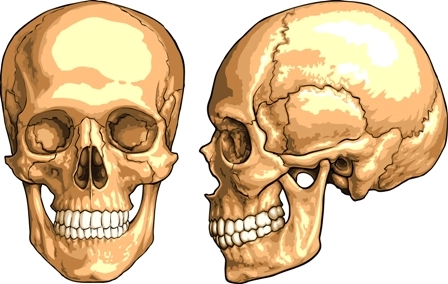Watch These 3 Arthrocentesis Myths That Could Prove Costly

Hint: Guidelines for arthrocentesis coverage may vary from payer to payer.
When your clinician is thinking of performing an arthrocentesis of the temporomandibular joint (TMJ), you will need to know whether or not this procedure is covered by the payer and the rules for coverage. In addition, you will also need to be aware of what other codes you can or cannot report with the arthrocentesis procedural code.
Background: Arthrocentesis is a minor surgical procedure that your surgeon will undertake under local or general anesthesia. During the procedure, your clinician will introduce two hypodermic needles and will flush the area of the joint using Ringers Lactate or sterile saline. For the placement of the hypodermic needles into the area of the joint, your surgeon may or may not make use of fluoroscopic guidance. Your surgeon will opt for this procedure to help reduce inflammation in the joint, reduce adhesions of the joint and to help flush out any unwanted products of tissue breakdown. When your surgeon performs an arthrocentesis of the TMJ, depending on whether or not he used fluoroscopic guidance for the placement of the needles, you will have to report the procedure using these two CPT® codes:
Bust these three common myths that will help you achieve reporting success and help you better understand the rules for reporting an arthrocentesis of the TMJ.
Myth 1: Arthrocentesis Procedure Doesn’t Need any Preauthorization
Reality: This however, is not true. According to Medicare statute, 1862(a)(12) of the Social Security Act, payment “for services in connection with the care, treatment, filling, removal, or replacement of teeth or structures directly supporting teeth” are excluded. As a result, Medicare generally does not cover treatment for TMJ disorders.
If you look at coverage guidelines for other payers, you might see that they also may not provide coverage for all procedures performed on the TMJ. So, if your oral surgeon is planning on performing an arthrocentesis of the TMJ, ensure that you check with the payer beforehand to see if the procedure is covered or not. In addition, make sure that the procedure is covered for the specific diagnosis for which your clinician is planning to perform the procedure.
You might also be faced up with the task of having to get a clearance from the payer’s in-house patient management representatives who will review the history, findings of the physical examination, imaging studies, conservative treatment that the patient has undergone in the months prior and the management that has been planned by your oral surgeon.
Documentation guidelines: In order to prove medical necessity for the arthrocentesis, you will have to include documentation about previously prescribed conservative management procedures such as avoiding chewing hard foods, pharmacological management, and physical therapy. In spite of providing conservative management for more than two weeks, your clinician should note symptoms such as pain, difficulty in chewing, restricted range of motion in either jaw opening, lateral movements of the jaw or if there is continued deviation of opening of the jaw present.
You should also include documentation about any imaging studies (such as MRI or other x-rays) that have been performed and interpreted to support the necessity of the procedure. “The evaluation and management of the patient should indicate pain and other symptoms that indicate the need for TMJ arthrocentesis,” says Barry Shipman, DMD, clinical professor, University of Florida School of Dentistry, Hialeah Dental Center. Also, don’t forget to include details which show that the problem is not originating because of a dental problem and is specific to the TMJ to further substantiate the medical necessity of performing the arthrocentesis.
Myth 2: 20605/ 20606 is Reported Only Once for Bilateral Procedures
Reality: If you look at the descriptors to 20605 and 20606, you will see that it includes the term “joint” and not “joints.” This indicates that you report the procedure when your clinician performs the arthrocentesis on one side of the TMJ. If your clinician performs the procedure on the other side of the TMJ, you will have to report it separately with another unit of 20605 or 20606, as appropriate. Since you need to let the payer know that both the sides were treated and to avoid denial, you need to append the modifier 50 (Bilateral procedure) to the second unit of the arthrocentesis code you are reporting.
On the other hand, if your clinician performed two different TMJ procedures (on the same joint or the other TMJ), you will need to know if you can report these procedures separately on the same calendar date of service. For this you need to be aware of Correct Coding Initiative (CCI) edits that are in place for reporting other TMJ procedural codes with 20605 and 20606.
You will not face any edits if you are reporting an arthrocentesis with an arthrotomy procedure (21010, Arthrotomy, temporomandibular joint). But, if your clinician is performing same session arthroscopy or an arthroplasty, you will face edits. So, you will face edits when you are planning on reporting one of the following codes with 20605 or 20606:
Modifier indicator: The modifier indicator for these above mentioned edit bundles with 20605 and 20606 is ‘1.’ This modifier indicator denotes that you can use a modifier to overcome the edit so that you can get separate reimbursement for both the codes. You will have to append the modifier with 20605 (or 20606) as this forms the column 2 code for the edits. The modifier that you have to append to 20605 (or 20606) is 59 (Distinct procedural service).
Myth 3: Report an E/M Code Every Time for Evaluations Prior to Arthrocentesis
Reality: No, you should not always reach out to an E/M code for the preoperative evaluation that your clinician will perform prior to undertaking the arthrocentesis procedure. This is considered to be a part of the routine preoperative management of the patient prior to performing the procedure and doesn’t warrant separate reporting using an E/M code.
But, there are some instances wherein you can report an additional E/M code for evaluations done prior to performing the arthrocentesis. If your clinician performs a separate and significantly identifiable E/M service that is not a direct evaluation of the patient for the persisting problem for which the procedure has been planned, you can report an additional E/M code.
However, you should remember that there are CCI edits in place if you are trying to report an E/M code with either 20605 or 20606. But, again, the modifier indicator to the edit bundle with the arthrocentesis code is ‘1,’ which means you can use a suitable modifier to overcome the bundle. Since the E/M codes form the column 2 codes in the edits with 20605 and 20606, you will have to append the modifier to it. The appropriate modifier that you will have to use with the E/M code is 25 (Significant, separately identifiable evaluation and management service by the same physician or other qualified health care professional on the same day of the procedure or other service).




